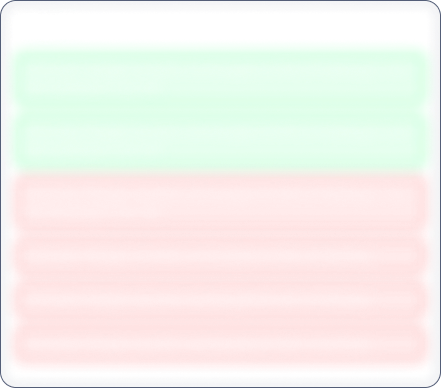Year End Sale 50% off
Groarc Industries India

No Data Available
Investor Sentiment
Groarc Industries India Share price and Fundamental Analysis
Key Metrics
Stock Returns
Stock Heatmap

No Stocks
Smart Score

Unlock Smart Score
See Detailed Analysis & Insights


Unlock Insights
See Detailed Analysis & Insights
Technicals
Returns Calculator
If you would have investedResearch Report
No Research Report
Corporate Action
Financials
Key Ratios
ROE
Avg ROE (3 Yrs) : NaN%
ROCE
Avg ROCE (3 Yrs) : NaN%
ROA
Avg ROA (3 Yrs) : NaN%
NPM
Avg NPM (3 Yrs) : NaN%
Dividend History
5 Year FactSheet
Documents

No Data Available
News
Groarc Industries India Management and History
Company Management


Unlock Management Data
See Detailed Analysis & Insights
Company History
Telesys Info-Infra (I) Ltd. (Formerly known Telesys Software Ltd) was incorporated in October, 1992, as Telesys Software Pvt. Ltd and subsequently converted into a public limited company in November, 1999. TSL was originally promoted by S R Kamath and Vatsala R Kamath. The name of the Company was changed from Telesys Software Ltd to Telesys Info-Infra (I) Ltd w.e.f. 05.11.2009. Therefore the Company operated into two segments i.e. Software development & sales in India and infrastructure, real estate and allied activities.
The Company embraced the Agile method of development, enabling productivity and innovation. It developed and delivered the first software-based, highly available signaling solution to AT&T Wireless in 1999, helping this Tier 1 carrier to become the only operator supporting SS7 Signaling over IP within its network, a true feat for the time. Since then, it helped operators worldwide transition from high cost infrastructures to cost effective, COTS IT hardware with open architecture, fault tolerant signaling software.
As an industry-leading software provider, Telesys proved in delivering multi-generational signaling solutions to all of the world's largest service providers for voice, video, and data communications. Whether its traditional communication networks or solutions for evolving generations, Telesys's team of experts leverage their knowledge of software engineering and their programming skills to deliver carrier class products. When the industry started to move towards cost-optimizing virtualization, their cloud-ready software enabled operators to deploy and seamlessly migrate their solutions from bare metal to a cloud infrastructure.
The Company started its Data Center at Madras in 1993 for processing various data by using computer technology. It developed and installed customised software catering to industries such as Hotels, Hospitals, Education Institutions and Transport industry segments. At present, it has two development centers in Chennai with about 50 software professionals.
The Company on 10 February, 2000, came out with a public issue of 50,00,000 equity shares of Rs 10 each for cash at a premium of Rs 5 per share aggregating to Rs 750 lakhs to provide funds for the expansion of software development facilities and market development of the products.
Groarc Industries India Share Price
Groarc Industries India share price reflects investor sentiment toward the company and is impacted by various factors such as financial performance, market trends, and economic conditions. Share price is an indicator which shows the current value of the company's shares at which buyers or sellers can transact.
Groarc Industries India Market Cap
Market capitalization of Groarc Industries India indicates the total value of its outstanding shares. Marketcap is calculated by multiplying share price and outstanding shares of the company. It is a helpful metric for assessing the company's size and market Valuation. It also helps investors understand how Groarc Industries India is valued compared to its competitors.
Groarc Industries India PE Ratio
Groarc Industries India PE ratio helps investors understand what is the market value of each stock compared to Groarc Industries India 's earnings. A PE ratio higher than the average industry PE could indicate an overvaluation of the stock, whereas a lower PE compared to the average industry PE could indicate an undervaluation.
Groarc Industries India PEG Ratio
The PEG ratio of Groarc Industries India evaluates its PE ratio in relation to its growth rate. A PEG ratio of 1 indicates a fair value, a PEG ratio of less than 1 indicates undervaluation, and a PEG ratio of more than 1 indicates overvaluation.
Groarc Industries India ROE (Return on Equity)
Return on Equity (ROE) measures how effectively Groarc Industries India generates profit from shareholders' equity. A higher ROE of more than 20% indicates better financial performance in terms of profitability.
Groarc Industries India ROCE (Return on Capital Employed)
Return on Capital Employed (ROCE) evaluates the profitability of Groarc Industries India in relation to its capital employed. In simple terms, ROCE provides insight to investors as to how well the company is utilizing the capital deployed. A high ROCE of more than 20% shows that the business is making profitable use of its capital.
Groarc Industries India Total Debt
Total debt of Groarc Industries India shows how much the company owes to either banks or individual creditors. In simple terms, this is the amount the company has to repay. Total debt can be a very useful metric to show the financial health of the company. Total debt more than equity is considered to be a bad sign.
Groarc Industries India Debt to Equity Ratio
The Debt-to-Equity (DE) ratio of Groarc Industries India compares its total debt to shareholders' equity. A higher Debt to Equity ratio could indicate higher financial risk, while a lower ratio suggests that the company is managing its debt efficiently.
Groarc Industries India CAGR (Compound Annual Growth Rate)
CAGR shows the consistent growth rate of Groarc Industries India over a specific period, whether it is over a month, a year, or 10 years. It is a key metric to evaluate the company’s long-term growth potential. Main metrics for which CAGR is calculated are net sales, net profit, operating profit, and stock returns.
Groarc Industries India Technical Analysis
Technical analysis of Groarc Industries India helps investors get an insight into when they can enter or exit the stock. Key components of Groarc Industries India Technical Analysis include:
Support Levels (S1, S2, S3)
There are usually multiple support levels, but the main support levels for a stock are S1, S2, S3. Support levels indicate price points where stock might get support from buyers, helping the stock stop falling and rise.
Resistance Levels (R1, R2, R3)
There are usually multiple resistance levels, but the main resistance levels for a stock are R1, R2, R3. Resistance levels represent price points where Groarc Industries India shares often struggle to rise above due to selling pressure.
Groarc Industries India Dividends
Dividends refer to the portion of the company’s profits distributed to its shareholders. Dividends are typically paid out in cash and reflect Groarc Industries India ’s financial health and profitability.
Groarc Industries India Bonus Shares
Bonus shares are usually given by companies to make the stock more affordable, increase liquidity, boost investor confidence, and more.
Groarc Industries India Stock Split
Stock split increases the number of its outstanding shares by dividing each existing share into multiple shares. When the company offers a stock split, the face value of the stock reduces in the same proportion as the split ratio.
Groarc Industries India Financials
The financials of Groarc Industries India provide a complete view to investors about its net sales, net profit, operating profits, expenses, and overall financial health. Investors can analyze financial data to assess the company’s stability and also understand how the company has been growing financially.
Groarc Industries India Profit and Loss Statements
The profit and loss statement of Groarc Industries India highlights its net sales, net profit, total expenditure, and operating profits in the current financial year. This Profit and Loss statement is crucial for evaluating the profitability and financial stability of Groarc Industries India .
Groarc Industries India Balance Sheet
The balance sheet presents a snapshot of Groarc Industries India ’s assets, liabilities, and equity of shareholders, providing insights into the financials of the company.
Groarc Industries India Cashflow Statements
Cashflow statements track the company's cash inflows and outflows over a period. It is an essential tool for understanding how well the company manages its liquidity and finances.


